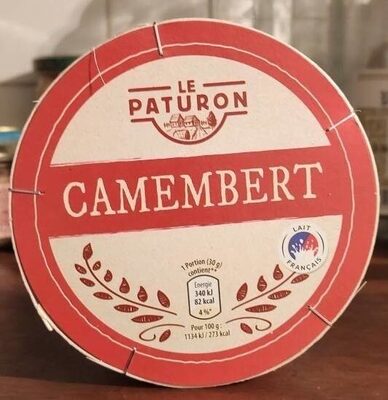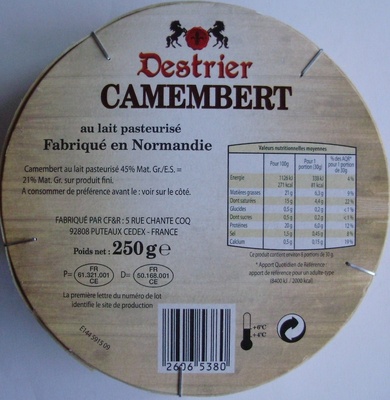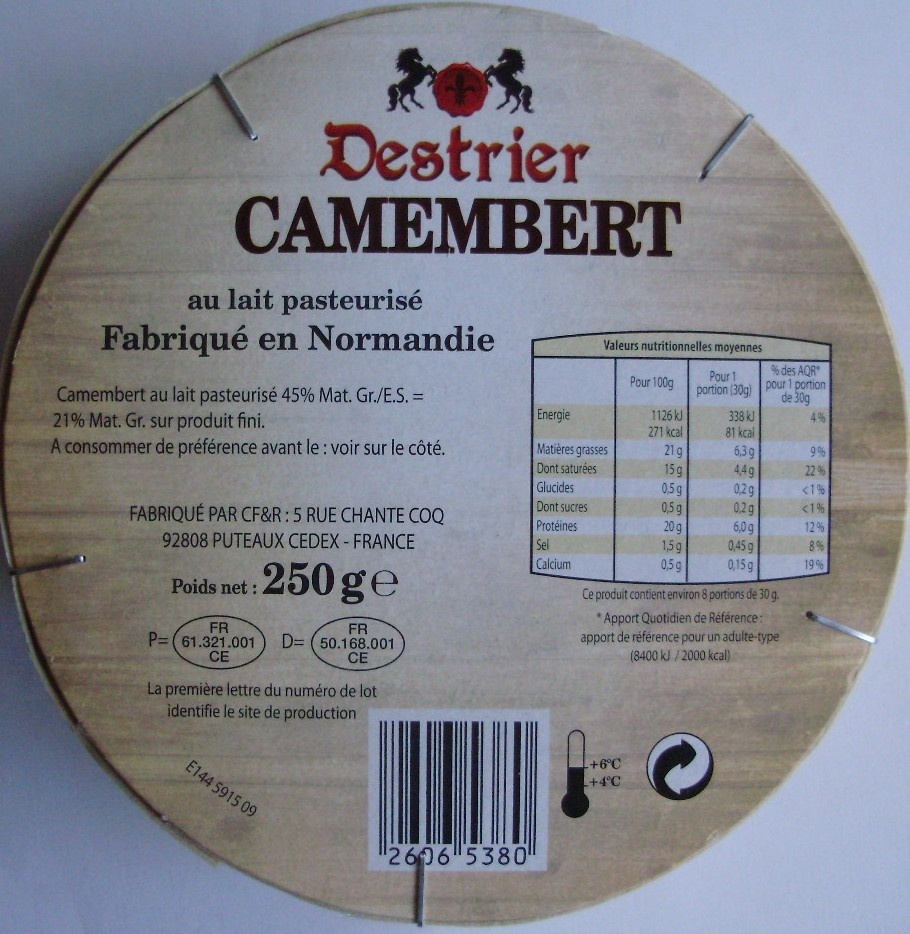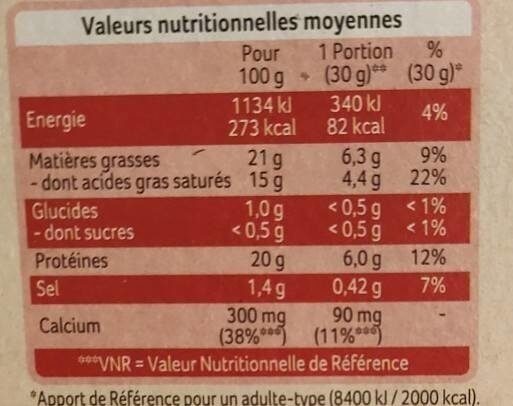Camembert - Destrier - 250 g
Ambiguous barcode: This product has a Restricted Circulation Number barcode for products within a company. This means that different producers and stores can use the same barcode for different products.
×
This product page is not complete. You can help to complete it by editing it and adding more data from the photos we have, or by taking more photos using the app for Android or iPhone/iPad. Thank you!
×
Barcode: 26065380
Common name: Fromage industriel de France, à pâte molle à croûte fleurie, au lait pasteurisé de vache - Camembert, au lait pasteurisé (21 % MG)
Quantity: 250 g
Packaging: Metal, Paper, Box, Cardboard, Fresh, Wood, fr:Agrafe
Brands: Destrier
Categories: Dairies, Fermented foods, Fermented milk products, Cheeses, Soft cheeses, Cow cheeses, Fresh foods, Soft cheeses with bloomy rind, Camemberts, Cow camemberts, French cheeses, Pasteurized cheeses, Camemberts from pasteurized cow milk, Industrial cheese
Labels, certifications, awards:
Green Dot, fr:Au-lait-pasteurise, fr:Eco-emballages, fr:Fabrique-en-normandie
Origin of ingredients: France
Manufacturing or processing places: Compagnie des Fromages & Richesmonts - CF&R (Filiale Sodiaal International) - ZI Le Domaine - Route de Saint-Quentin - 50220 Ducey, Manche, Compagnie des Fromages & Richesmonts - CF&R (Filiale Sodiaal) - La Folie - 61250 Pacé, Orne, Basse-Normandie, France
Traceability code: FR 50.168.001 CE - Ducey (Manche, France), FR 61.321.001 CE - Pacé (Orne, France)
Stores: Aldi
Matching with your preferences
Environment
Carbon footprint
Packaging
Transportation
Report a problem
Data sources
Product added on by openfoodfacts-contributors
Last edit of product page on by packbot.
Product page also edited by beniben, ecoscore-impact-estimator, foodless, inf, jacob80, kiliweb, quechoisir, scanbot, tester, yuka.sY2b0xO6T85zoF3NwEKvlnBtc9znpyvpHQXVixPW54euf5bNMPBc-KHjGas, yuka.sY2b0xO6T85zoF3NwEKvlnZIQ_P0ozLPER7Sk2Ss6N6LA5fFX-lj5KrRb6o.











